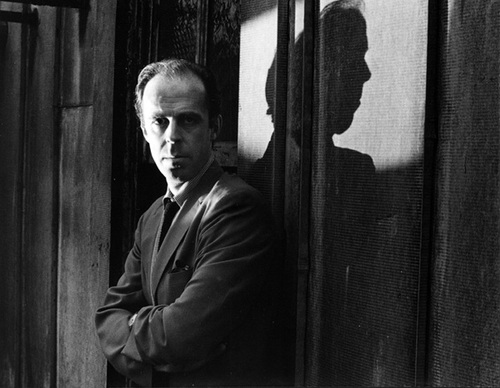Verge Ensemble at the Corcoran Gallery
By Stephen Brookes • The Washington Post • September 24, 2012
The small but determined Verge Ensemble — the Washington-based new music group for whom the term “plucky” might have been invented — opened its 2012/2013 season on Sunday afternoon at the Corcoran Gallery. It was a fascinating program, contrasting different approaches to notating music — from the highly specific to the dauntingly vague — and underscoring the role that performers themselves play in the realization of a composer’s ideas. Earle BrownThe program opened with two barely notated works from the early 1950s, Morton Feldman’s “Intersection IV” for solo cello and Earle Brown’s “December, 1952.” No pitch or rhythm or even style is given in either piece; they’re sketches, frameworks for performers to fill in with their own ideas, and that seemed to suit the Verge players just fine. Cellist Steven Honigberg turned in a wonderfully colorful and lively account of the Feldman — a composer not particularly renowned for liveliness — and was joined by violinist Jonathan Richards and violist James Stern for an interpretation of the Brown that was so lush and rhapsodic it almost seemed to mock the spare graph of dots and dashes that make up the score.
Earle BrownThe program opened with two barely notated works from the early 1950s, Morton Feldman’s “Intersection IV” for solo cello and Earle Brown’s “December, 1952.” No pitch or rhythm or even style is given in either piece; they’re sketches, frameworks for performers to fill in with their own ideas, and that seemed to suit the Verge players just fine. Cellist Steven Honigberg turned in a wonderfully colorful and lively account of the Feldman — a composer not particularly renowned for liveliness — and was joined by violinist Jonathan Richards and violist James Stern for an interpretation of the Brown that was so lush and rhapsodic it almost seemed to mock the spare graph of dots and dashes that make up the score.
 Andrew NormanTraditionally notated works by two of America’s most engaging composers followed. Jeffrey Mumford can always be counted on for probing, intensely moving music, and Stern brought out all the dark beauty of “wending,” a 2001 piece for solo viola. The music of Augusta Read Thomas rarely fails to delight the ears, and “Bells Ring Summer” for solo cello was no exception — a gorgeous work with all the open-air exuberance of a carillon.
Andrew NormanTraditionally notated works by two of America’s most engaging composers followed. Jeffrey Mumford can always be counted on for probing, intensely moving music, and Stern brought out all the dark beauty of “wending,” a 2001 piece for solo viola. The music of Augusta Read Thomas rarely fails to delight the ears, and “Bells Ring Summer” for solo cello was no exception — a gorgeous work with all the open-air exuberance of a carillon.
But perhaps the most spectacular music of the afternoon came in “The Companion Guide to Rome,” a beautifully drawn suite for string trio by the young and wildly gifted composer Andrew Norman. It’s a series of nine “portraits” of various churches across Rome, and it ranges from the explosive ecstasy of the opening “Teresa” to the ethereal weightlessness of “Ivo,” the ghostly fragility of “Clemente” and the exalting, jaw-dropping brilliance of the closing “Sabina.” Norman brings it all off with exceptional imagination and a very deft touch, and the Verge players played it with a sense of communion that was utterly convincing.


Reader Comments